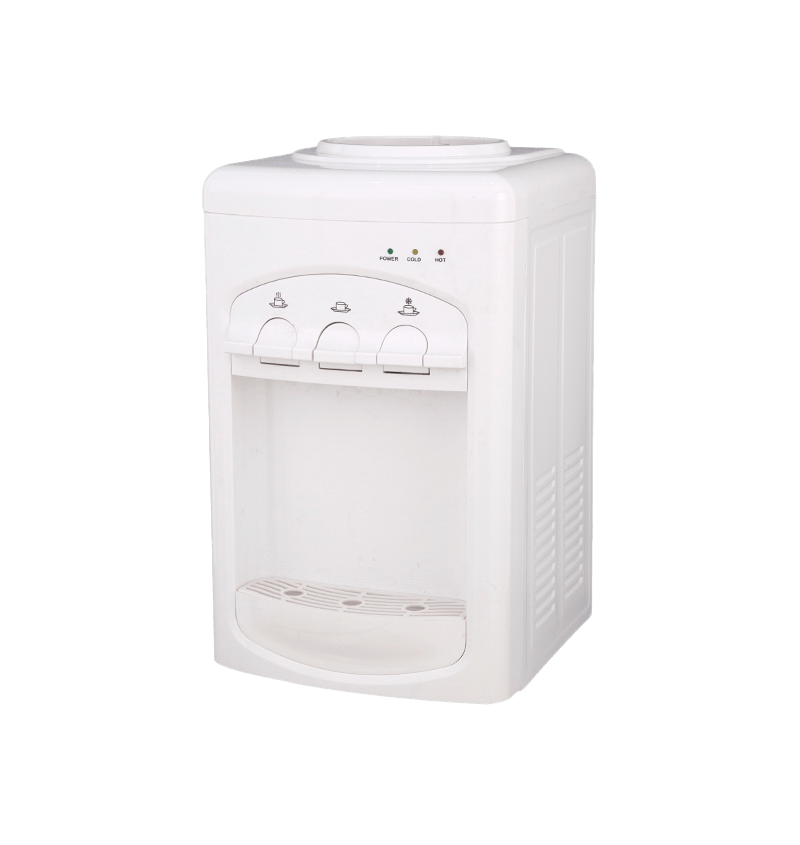There are various kinds of water purifiers in the water dispenser market with perfect functions and different styles. However, there are only two popular types in the market: ultrafilter and water purifier. And relative to the ultrafilter, the water purifier can ensure the purity of water quality, and is suitable for areas with serious water pollution. As everyone knows, many people need electricity for the water purifier, and it will cause waste water, so the application cost is increased. So, is the objective fact true? Furthermore, we will analyze why the water purifier needs electricity and how it can cause waste water. We hope that everyone can have an accurate cognitive ability of the water purifier and then be able to purchase it correctly.
1. Why do water purifiers need electricity?
water purifier is also RO reverse osmosis water purifier, which often filters water beyond the specification of purified water, because there is RO reverse osmosis membrane in its filter element. The principle of RO reverse osmosis purified water membrane is to use sufficient working pressure to make the organic solvent in the water solution be extracted according to the reverse osmosis membrane, and the orientation and infiltration orientation are reversed. The reverse osmosis method that exceeds the osmotic pressure can be used to separate, purify and concentrate Shrinkage solution. Using reverse osmosis technology can correctly remove the residue of dissolved salt, colloidal solution, bacteria, virus infection, bacterial endotoxin and most organic compounds in water, and obtain mineral water.
all normal pressure can not make ro RO membrane work, which can not meet the working pressure requirements of ro. Therefore, it is necessary to increase the pressure according to the installation of booster pump, which must be able to start by electricity. That is to say, RO RO membrane water purifier must use electricity.
the key of power consumption of water purifier is to operate equipment and charge pressure. The components inside the water purifier are electric, including high and low pressure switch, water inlet solenoid valve, waste water solenoid valve, pump and computer board. The computer board is the same as the nerve center of the human brain. It controls the operation of all the equipment. When the water is full, it will shut down and automatically clean when it reaches the required time. This kind of operation relies on the computer board to operate each electrical switch to achieve the actual effect. There is no immediate connection between water making and electricity, because the diameter of RO membrane commonly used in water purifier is very small, so it is necessary to pump more water according to the actual cleaning effect of RO membrane. I think the whole process is a whole process of freight logistics.
2. How can the water purifier produce waste water?
at present, the proportion of wastewater discharged from reverse osmosis water purifier in the market is usually 1:3 (mineral water: waste water). According to the calculation of 10 liters of water used in a home every day, 30 liters of wastewater must be discharged every day, that is to say, 30 * 30 = 900 liters = 0.9 tons.
from the perspective of technical specialty, the reverse osmosis water purifier on the market can not find waste water in essence. It can only have one leakage (or "source water") and two water outputs, which are respectively "penetrating water" (i.e. mineral water, domestic water) and "concentrated water" (i.e. purified water, washing water).
the drinking water is filtered by PP melt blown filter element, particulate matter activated carbon filter, and reduced activated carbon filter (to remove the residual chlorine in the water, the vast majority of suspended solids, rust, colloidal solution, as well as some organic compounds, smell and taste), and a small part of the water goes through reverse osmosis (to remove all kinds of residues in the water, including bacteria and other microbial species) It can be made into "penetrating water") and filtered by built-in particulate matter activated carbon (to deepen the removal of organic compounds, smell and taste, and improve taste) to prepare drinking mineral water for use. However, most of the water (concentrated water) has gone through the first four stages, but can not go through the second stage. It turns into purified water and is discharged as washing water.
in the daily life at home, the demand for washing water is much larger than that of domestic water, such as washing rice, washing bowls, washing bowls, washing clothes, and mopping the floor, which are all the key consumption of water at home. The concentrated water of the reverse osmosis water purifier on the market has gone through four filtering solutions. Therefore, except that the salt content is higher than that of drinking water, most other index values, such as turbidity, residual chlorine, saturation, colloidal solution, suspended solids, organic compounds, COD (organic chemical oxygen consumption), TOC (total organic chemical carbon), SDI (pollution index), etc., are much better than drinking water! How can we say this kind of good water How about waste water?




 English
English عربى
عربى Português
Português Español
Español








